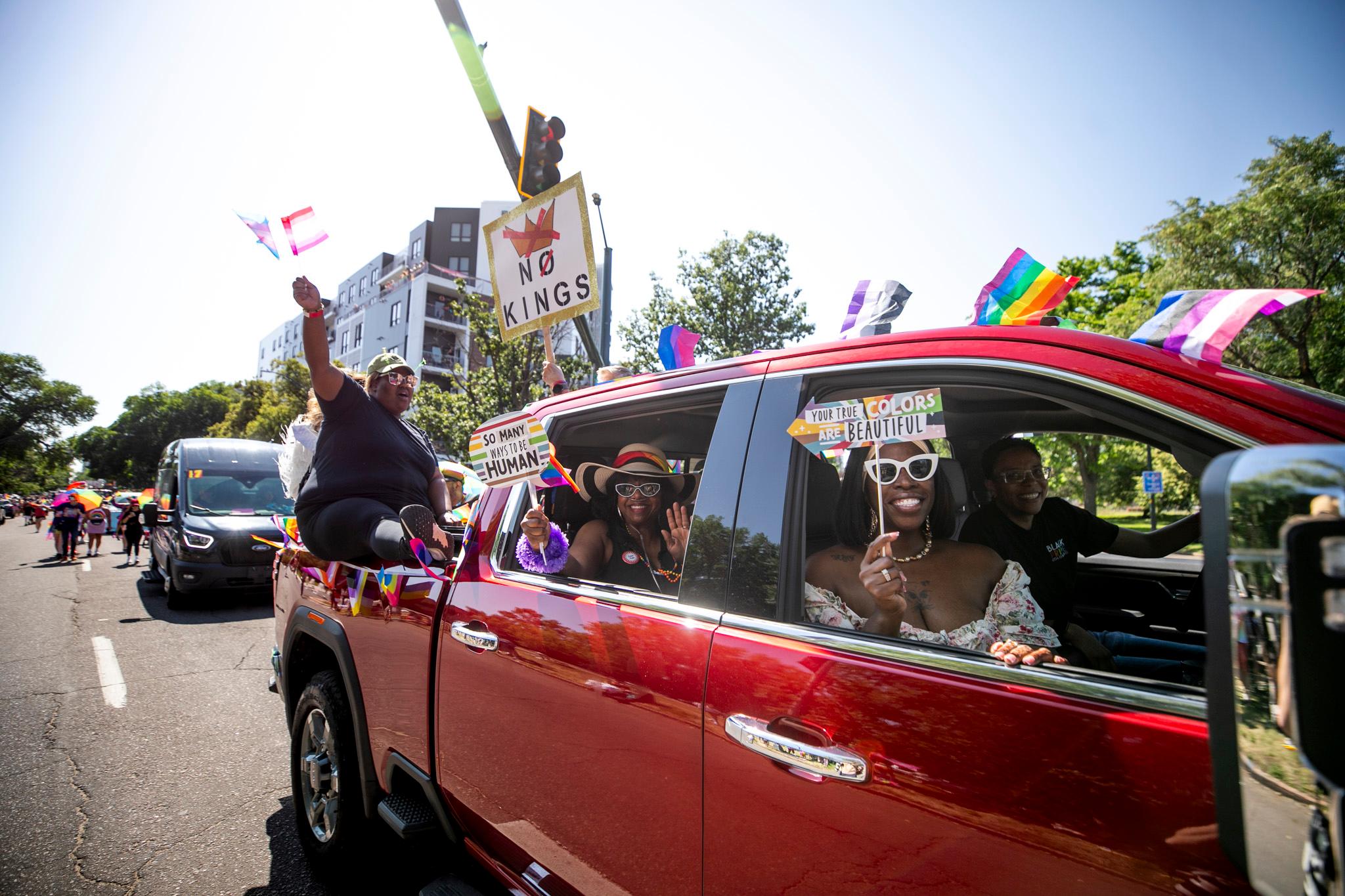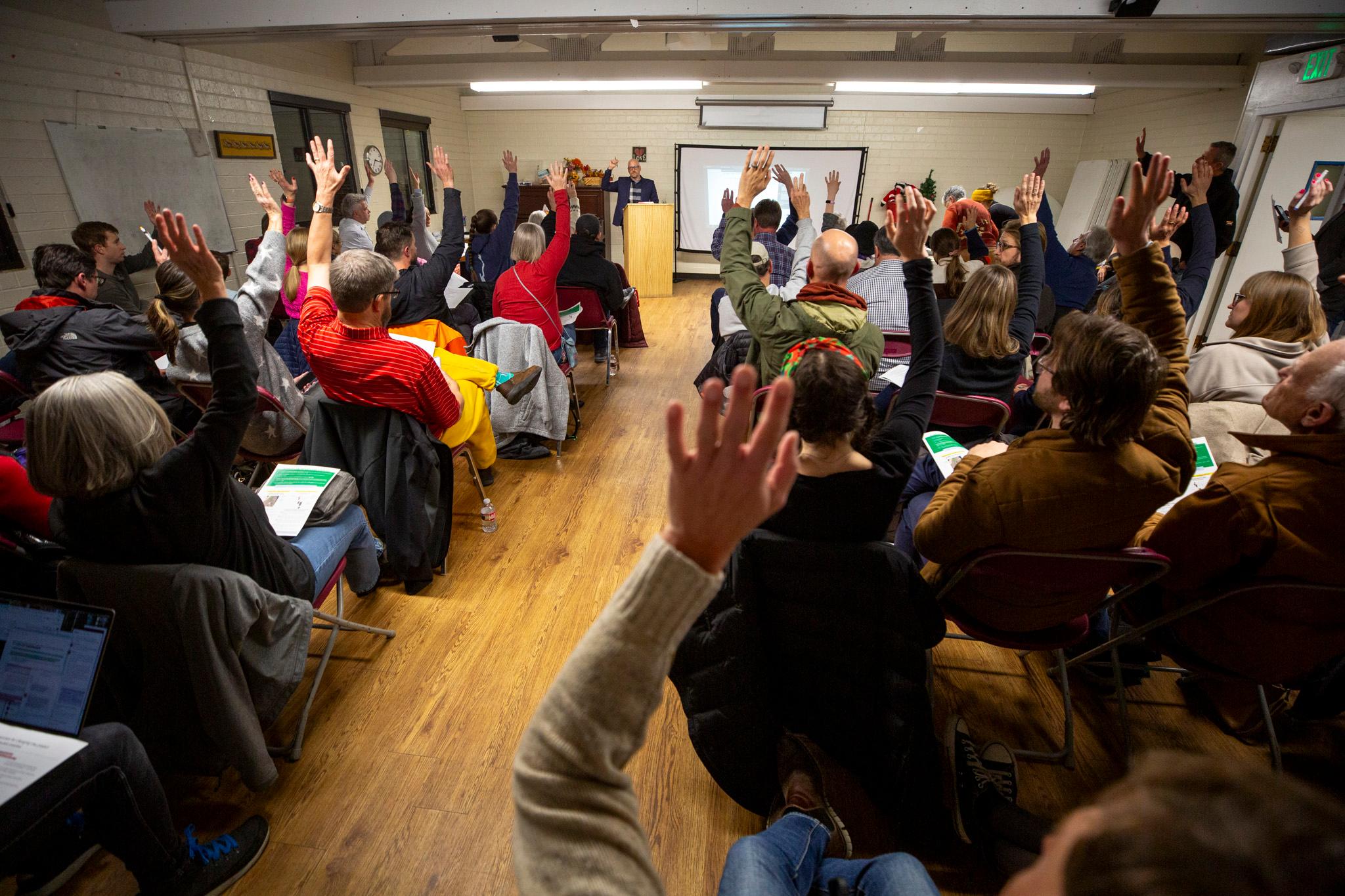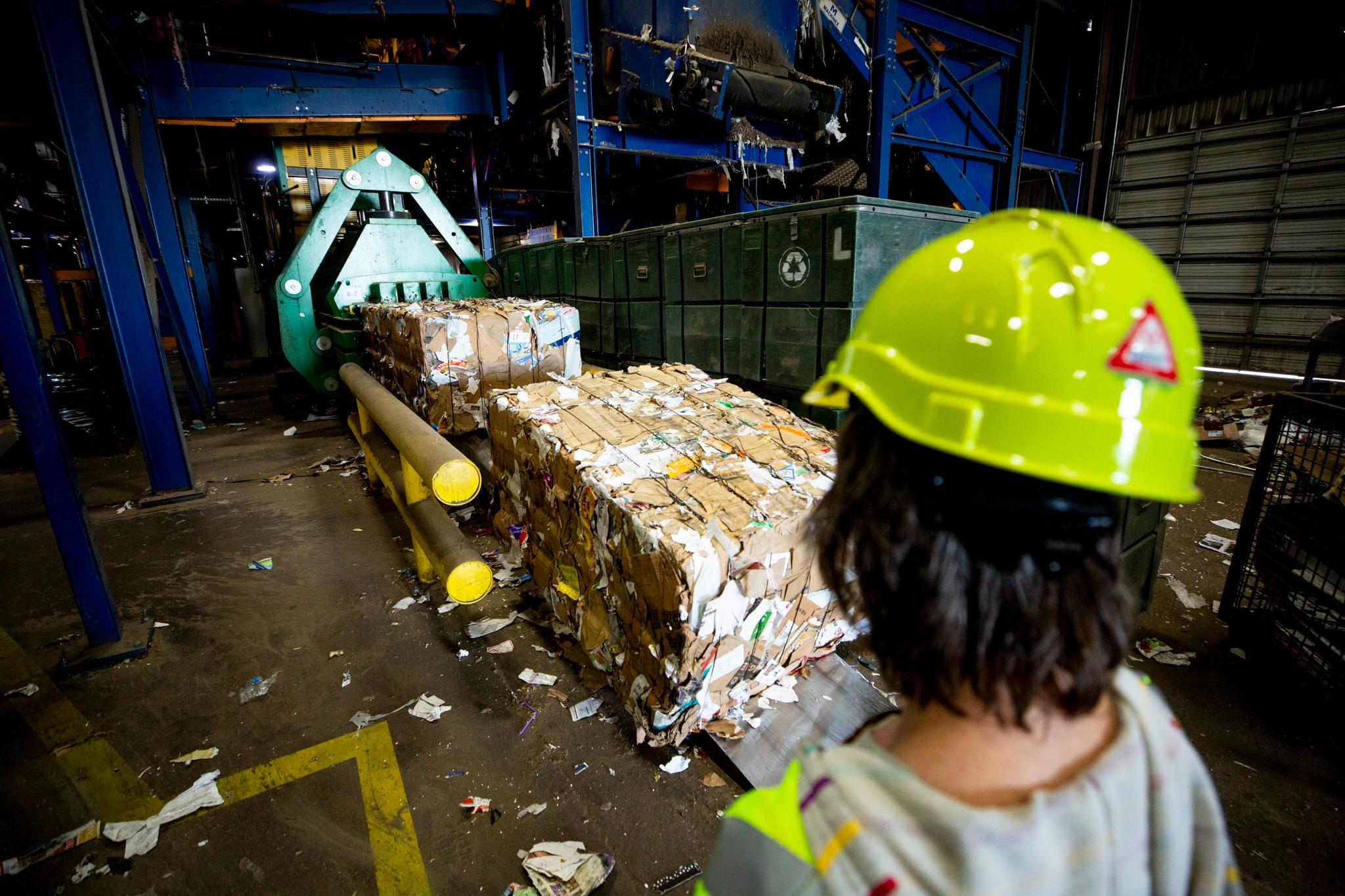Despite Wednesday evening's rain, Diane Travis had three crews hard at work on her flagstone sidewalks to keep them in compliance with the city and as pretty as they've been for over a century.
Travis has lived in a 126-year-old Uptown home for 26 years and, as an avid historic preservationist, she wasn't about to let Denver's city-wide sidewalk renovation plan take any of that legacy away from it. And because she doesn't want anyone else to have an excuse to lose their charming but difficult slabs, Travis hired the three companies to come out onto her yard to put on a demonstration.
Denver Public Works had been compiling a list of contractors who historic homeowners might call to revamp their flagstones, but Travis wasn't satisfied with the options. She spent 17 years working in masonry and another 20 in architecture, and she knew about skills that would be needed to preserve flagstone that weren't represented on the city's list.
A little more than two weeks ago, Public Works began surveying the first section of sidewalks in their first region of focus, which includes many historic neighborhoods in central Denver. As they assess broken and uneven slabs, they'll distribute notices to homeowners about what needs to be fixed. Residents can hire out their own labor to get back into compliance, but the city will fix it for them if they wait longer than 45 days, as per a city ordinance. Those residents will then be charged for the labor.
At a meeting last week with Capitol Hill United Neighborhoods's historic preservation committee, Public Works Communications Director Nancy Kuhn said the city will replace flagstone with concrete as a matter of dealing with the project's overall cost. The city will, however, help re-level flagstones if they're just in need of realignment.
Denver is also offering financial assistance for people who qualify, but that also would not allow for broken flagstones to remain. While some neighbors present at the meeting weren't exactly pleased to hear that, Travis committed to making sure people knew their options.

What needs to be fixed?
- Slabs that are extremely broken and cracked and cause an "unstable walking surface."
- Slabs that are missing.
- Areas where there's more than 3/4 of an inch in height difference between two adjoining slabs.
- Slabs that have a slope of more than a 5 percent grade.
Here are Travis' options for flagstone fixes:
1. Grind down uneven edges.
If one stone is more than 3/4 of an inch but less than one-and-a-half inches higher than the one next to it, homeowners can hire someone to grind the edge down for a seamless sidewalk or do it themselves.
Travis hired Singing Hills Landscape company to take a look at one potential shave job in front of her house. Dylan McFarland, who was leading the effort, estimated it could cost as little as $20 to grind down a single stone.
2. Lift an unruly stone and re-level the dirt beneath it.
If grinding is out of the question, but a flagstone is still in good shape, a homeowner can hire someone to do this or they can try to do it themselves. Public Works has a guide on their website for ambitious do-it-yourselfers, but note that you'll have to get a permit if you want to operate heavy machinery or need to block sidewalk access to do it.
Travis hired Ruben Rivera and his team to demonstrate how you could do it on your own. His crew worked on a slab between the main sidewalk and the street to lift an uneven slab without blocking things up (and thus without a permit). Please note, doing this yourself is not for the faint of heart. It took three guys to muscle the slab up, and then back down, once they evened out the soil and placed gravel on top to stabilize it. You'll also need to call Public Works to get a forester to come out if there are tree trunks or roots blocking the way. Removing a public tree without a permit can carry a hefty fine, and every tree in the city is labeled and mapped.
Rivera estimated it might cost $200-300 per stone to hire a crew like his to do the work.

3. Leave that stone where it's at and lift it from beneath.
This process is fancy, called "mud jacking," in which a hole is bored into a slab, then concrete (or in this case a polyurethane mix) is injected beneath the stone to raise it. You'll need to hire a company like CreteJack to come and do the job.
CreteJack owner Andrew Feigenbaum said the mix his company injects beneath the slabs creates a chemical reaction that rises as foam and solidifies in a matter of minutes. It's so strong that he and his team can stand on top of the stone as it slowly rises into place. He said the whole process takes as little as a half hour, but it'll cost you. A big stone like they lifted in Travis' yard costs between $400-500.
One thing to note: contractors will have to bore bigger holes if they're going to inject mud or concrete (instead of polyurethane) beneath a slab. There's evidence someone did that years ago in front of Travis' house. Most are intact, but at least one of those holes appears to have caused its entire stone to shatter over time.

4. Replace the slab.
If your flagstone is really messed up, you might have to get a new one. The good news is the material doesn't cost so much. Josh Buster, from Lyons Sandstone, said new flagstone costs about $15 per square foot of material, but then you also have to pay for installation.
What's all the fuss about flagstone anyway?
Judy Trompeter, president of the neighborhood group Uptown on the Hill, said the neighborhood needs its structures, like sidewalks, to represent its rich history.
"They add to the character and charm of the neighborhood, and they’re part of our history and should be saved," she said. "It shows the development and the change in the city over time."
The sandstone has lasted for a century already, longer than she supposes concrete would. And, she added, it seems like a waste to throw all this stone away.
"A mountain died for these sidewalks, one could say."

As the city grows and changes around these homes, which belong to one of the city's first neighborhoods, there are some who want to make sure there's a link to the past amid all that modernity. Trompeter said she's thankful that Travis is taking the time to make sure people who can replace their flagstones the right way know how to get it done. She and members of other neighborhood groups hope to raise fund for those who can't.
The fact is, getting into historic homeownership is costly business. Maybe adding extra dollars for new sidewalks is not ideal for people already spending on preservation but, then again, locals who came to watch said it's just part of the game.
"This is sort of like getting your teeth cleaned, it isn’t for forever," Travis said. "The fact is, I haven’t done any of this, and I've owned [the house] for 26 years."
The next time this needs to happen, she said, it will be someone else's problem. Or, in her case, joy.

Kuhn, Denver Public Works chief spokesperson, said the city-wide project was always going to be tough.
"This is one of the most complex things. It’s why it’s never been done before," she said.
Travis is being "really proactive," and the fact that she's helping inform people, she added, "It's terrific."












